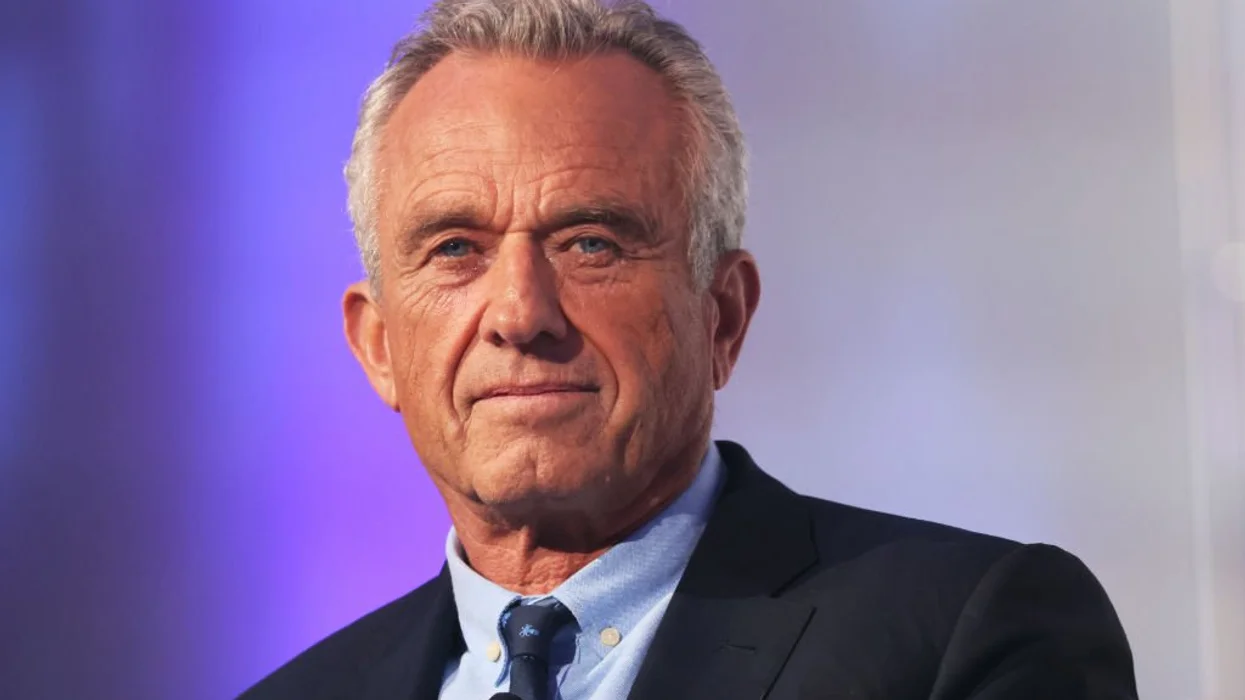
© 2025 Blaze Media LLC. All rights reserved.
"Food stamp president."
 House Minority Leader Nancy Pelosi, D-Calif., Senate Majority Leader Harry Reid, D-Nev., Speaker of the House John Boehner, R-Ohio, and Senate Minority Leader Mitch McConnell, R-Ky., speak to the media at the White House Nov. 16, 2012, in Washington. (Roger Wollenberg/Getty Images)
House Minority Leader Nancy Pelosi, D-Calif., Senate Majority Leader Harry Reid, D-Nev., Speaker of the House John Boehner, R-Ohio, and Senate Minority Leader Mitch McConnell, R-Ky., speak to the media at the White House Nov. 16, 2012, in Washington. (Roger Wollenberg/Getty Images)
Former Speaker of the House Newt Gingrich during the Republican presidential primaries often referred to President Barack Obama as the “food stamp president,” a charge that was met with piercing and outraged cries of “racism!”
"Over here you have a policy which, with Reagan and me as speaker, created millions of jobs -- it's called paychecks. Over here you have the most successful food stamp president in American history, Barack Obama," Gingrich said.
Supposed "racist dog whistles" aside, it should be noted that Gingrich is not the first person to voice concern over the expansion of our so-called “welfare nation."
But is this concern warranted? That is, is the growth of the welfare state really something we need to worry about?
Considering the fact that for every 1.65 employed persons in the private sector, one person currently receives welfare assistance and the fact that for every 1.25 employed persons in the private sector, one person currently receives welfare assistance or works for the government, we’d say "yes."
“[It] is now more lucrative -- in the form of actual disposable income -- to sit, do nothing, and collect various welfare entitlements, than to work,” Zero Hedge grimly notes.
As the below chart from Gary Alexander, Secretary of Public Welfare, Commonwealth of Pennsylvania, confirms, staying on government welfare has indeed become a lucrative gig for many.
The single mom is "better off earning gross income of $29,000 with $57,327 in net income & benefits than to earn gross income of $69,000 with net income and benefits of $57,045," Alexander explains.
 Now while some may want to avoid this discussion (and others prefer simply to yell “racism!”), facts are facts and the choices are clear: “… either [be] on the left side of minimum US wage, and [rely] on benefits, or move to the right side at far greater personal investment of work, and energy, and ... have the same disposable income at the end of the day,” the Hedge notes.
Now while some may want to avoid this discussion (and others prefer simply to yell “racism!”), facts are facts and the choices are clear: “… either [be] on the left side of minimum US wage, and [rely] on benefits, or move to the right side at far greater personal investment of work, and energy, and ... have the same disposable income at the end of the day,” the Hedge notes.
Here’s a chart illustrating the burden welfare places on current taxpayers:
 Most troubling is the fact that many in Washington look at the above and say to themselves, “Hey, let’s raise taxes,” instead of, “Hey, maybe we should do something about welfare costs.”
Most troubling is the fact that many in Washington look at the above and say to themselves, “Hey, let’s raise taxes,” instead of, “Hey, maybe we should do something about welfare costs.”
Why is this so troubling?
Because, as mentioned elsewhere on TheBlaze, higher and unreasonable (see France) tax rates usually lead to an exodus of cash and manpower. What do you suppose will happen once burdensome tax rates chase out all the money and high-income earners? The money may leave, but the cost of welfare won't.
If Washington has its heart set on raising taxes on the wealthy (which it does), that's one thing. But D.C. has to realize that it must also address entitlement reform -- or else things are about to become a whole lot more unsustainable.
Bottom Line: Again, just to be clear, for every 1.65 employed persons in the private sector, one person receives welfare assistance. For every 1.25 employed persons in the private sector, one person receives welfare assistance or works for the government.
There are 110 million privately employed workers and 88 million welfare recipients and government workers. The former’s numbers are shrinking while the latter’s are growing.
Here’s Alexander’s full presentation:
welfare failure
Follow Becket Adams (@BecketAdams) on Twitter
This story has been updated.
Want to leave a tip?
We answer to you. Help keep our content free of advertisers and big tech censorship by leaving a tip today.
Want to join the conversation?
Already a subscriber?
more stories
Sign up for the Blaze newsletter
By signing up, you agree to our Privacy Policy and Terms of Use, and agree to receive content that may sometimes include advertisements. You may opt out at any time.
Related Content
© 2025 Blaze Media LLC. All rights reserved.
Get the stories that matter most delivered directly to your inbox.
By signing up, you agree to our Privacy Policy and Terms of Use, and agree to receive content that may sometimes include advertisements. You may opt out at any time.





